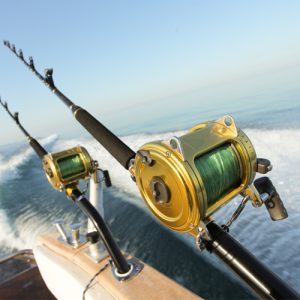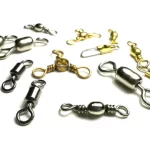Selecting the ideal saltwater fishing line can make all the difference in landing the perfect catch. A high-quality line should be strong yet sensitive, capable of long casts, resistant to abrasion, and durable enough to handle powerful fish. Understanding the various types of saltwater fishing lines will help in making the best choice for any fishing scenario.
Key Considerations for Saltwater Fishing Line
When choosing a fishing line, several factors must be taken into account:
- Pound-Test Rating: This measures the pressure needed to break the line. The amount of drag pressure applied is more important than the size of the fish being targeted.
- Line Weight: Lighter lines allow for farther casts and faster sinking, while heavier lines offer increased strength and stiffness.
- Color Selection: High-visibility lines are easier for anglers to see, but clear or camouflaged lines are nearly invisible to fish, making them ideal in clear water conditions.
Once these factors are determined, the next step is selecting between monofilament, fluorocarbon, or braided line.

Monofilament Fishing Line
Monofilament, commonly known as “mono,” is a versatile and popular choice for saltwater fishing. It is:
- Thin, strong, and resistant to water absorption.
- More abrasion-resistant than braided line.
- Stretchable, which can be beneficial when fighting strong fish.
For the best performance, a monofilament line should have a thin diameter and low memory to prevent looping. However, monofilament degrades with sun exposure and should be replaced every six months to a year, depending on use.
Braided Fishing Line
Braided lines are created by weaving multiple fiber strands together, offering superior strength compared to monofilament. Key advantages include:
- A higher pound-test strength in a thinner diameter.
- Greater sensitivity and lower stretch, making it ideal for bottom fishing.
- Resistance to sun and saltwater degradation, extending its lifespan.
While excellent for casting and deep-water fishing, braided line requires careful drag adjustments and a more delicate touch when reeling in fish.
Fluorocarbon Fishing Line
Fluorocarbon is a newer option with distinct advantages:
- Virtually invisible underwater due to its low light refraction.
- Stiffer and more abrasion-resistant than monofilament.
- Faster sinking capabilities, making it ideal for certain techniques.
However, fluorocarbon is stiffer and can be challenging to tie into knots. It is commonly used as a leader rather than a main fishing line.
Using Wire and Lead-Core Line
For targeting toothy fish, wire leaders provide excellent protection against bite-offs. Additionally, lead-core lines allow anglers to troll bait at precise depths.
Properly Spooling a Fishing Reel
Spooling a reel correctly is crucial to prevent line twists. For spinning reels:
- Lay the spool flat, run the line through the guides, and attach it using an arbor knot.
- Apply steady tension while winding to prevent loops.
For conventional reels, hold the spool with a pencil through its center and wind under pressure. Always recycle old monofilament and dispose of braided line responsibly.
Setting the Drag for Optimal Performance
The drag setting determines the pressure the reel applies to the line when a fish is hooked. A general rule is to set the drag at one-third of the line’s pound-test. Using a hand scale ensures accuracy and helps avoid break-offs during the fight.
Upgrade Your Saltwater Fishing Experience!
Selecting the right fishing line can dramatically improve success on the water. Whether using monofilament, braid, or fluorocarbon, each type has specific advantages suited for different conditions. Ready to enhance your next saltwater fishing trip? Make sure your reel is spooled with the perfect line and start reeling in those trophy fish!
Image/Source: takemefishing





